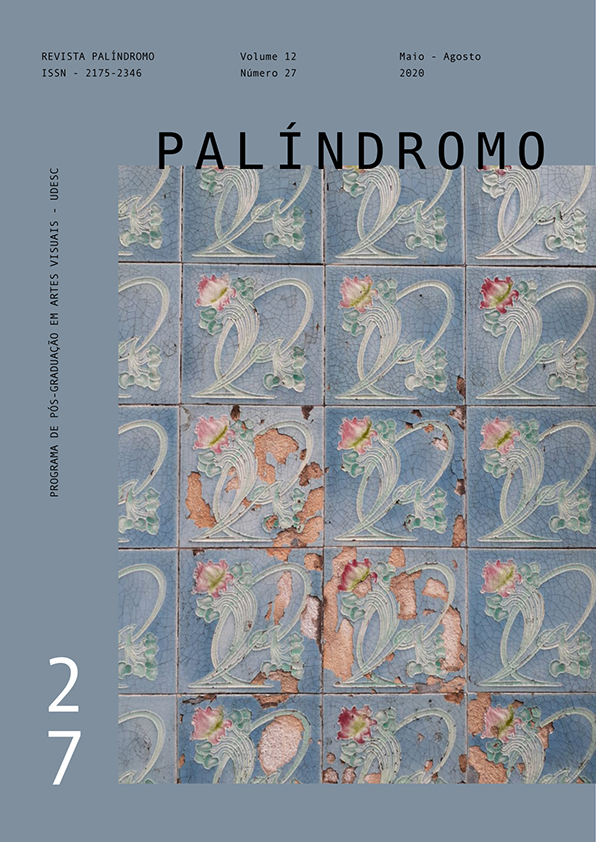Uma lição na loucura: um estudo sobre a insanidade de Ofélia
DOI:
https://doi.org/10.5965/2175234612272020298Parole chiave:
William Shakespeare, Ofélia, Hamlet, loucuraAbstract
O principal objetivo desta pesquisa é realizar uma análise da personagem Ofélia, da peça Hamlet, de William Shakespeare. Ao examinar os elementos mais relevantes à trajetória da personagem na peça, este estudo busca determinar os fatores que, de forma conjunta, culminaram em sua loucura. Os principais aspectos estudados são os personagens que compartilham interações significativas com Ofélia (como Polônio, Laertes e Hamlet), os desafios de seu papel como mulher, filha e amante em potencial, e a contínua influência do falecido Rei Hamlet sobre os eventos da peça.
Downloads
Riferimenti bibliografici
ABRAHAM, N.; RAND, N. T. (Org.). Notes on the Phantom: A Complement to Freud’s Metapsychology. Chicago: The University of Chicago Press, 1994. p. 171-176.
ABRAHAM, N.; RAND, N. T. (Org.). The Phantom of Hamlet or the Sixth Act, Preceded by the Intermission of “Truth”. Chicago: The University of Chicago Press, 1994. p. 187-205.
BLOOM, H. Hamlet: Poem Unlimited. 1. ed. New York: Riverhead Books, 2003. p. 37-44.
BLOOM, H. Shakespeare: The Invention of the Human. 1. ed. New York: Riverhead Books, 1998. p. 383-431.
CAMDEN, C. On Ophelia’s Madness. Shakespeare Quarterly, [S.l.], n. 2, p. 247-255, 1964.
JAMESON, A. B. Shakespeare’s Heroines: Characteristics of Women, Moral, Poetical and Historical. 1. ed. New York: A. L. Burt Company, 1900. p. 133-154.
RAND, N. T. Secrets and Posterity: The Theory of the Transgenerational Phantom. 1. ed. Chicago: The University of Chicago Press, 1994. p. 165-169.
SHAKESPEARE, W.; TRAYLER, H. (Org.). The Complete Works of William Shakespeare. Hertfordshire: Wordsworth Editions Limited, 2007. p. 670-713.
SMITH, B. Neither Accident nor Intent: Contextualizing the Suicide of Ophelia. South Atlantic Review, [S.l.], n. 2, p. 96-112, 2008.
Downloads
Pubblicato
Come citare
Fascicolo
Sezione
Licenza
Copyright (c) 2020 Palíndromo

TQuesto lavoro è fornito con la licenza Creative Commons Attribuzione 4.0 Internazionale.
DECLARAÇÃO DE DIREITOS AUTORAIS
a. Os artigos publicados pela revista são de uso gratuito, destinados a aplicações acadêmicas e não comerciais. Todos os direitos autorais são atribuídos à revista. Os artigos cujos autores são identificados representam a expressão do ponto de vista de seus autores e não a posição oficial da Revista Palíndromo. O (s) autor (es) compromete-se sempre que publicar material referente ao artigo publicado no Palíndromo mencionar esta publicação da seguinte forma:
Este artigo foi publicado originalmente pela revista Palíndromo em seu volume (coloque o volume), número (coloque o número) no ano de (coloque o ano) e pode ser acessado em: http://www.revistas.udesc.br/index.php/palindromo
b. Plágio, em todas as suas formas, constitui um comportamento antiético de publicação e é inaceitável. A revista Palíndromo utiliza o software iThenticate de controle de similaridade


